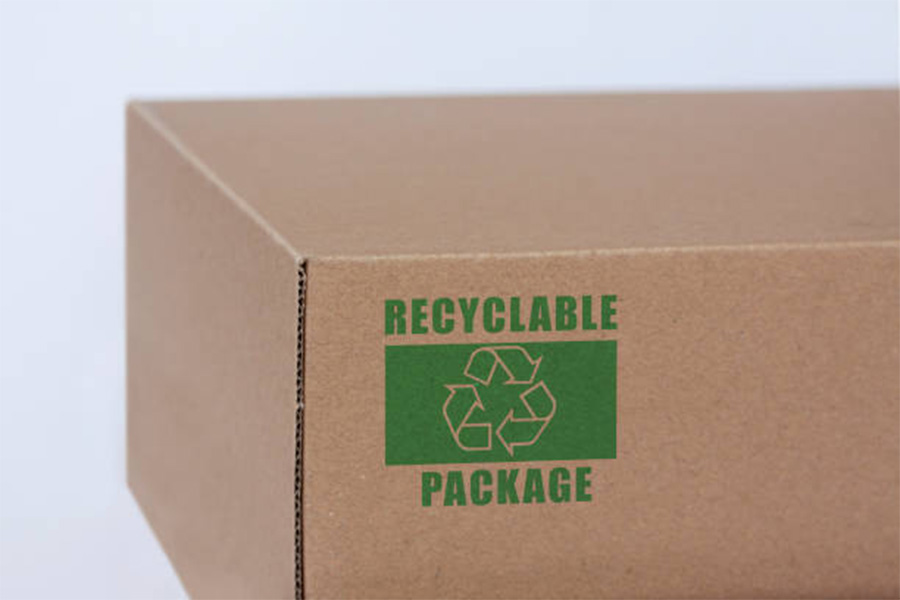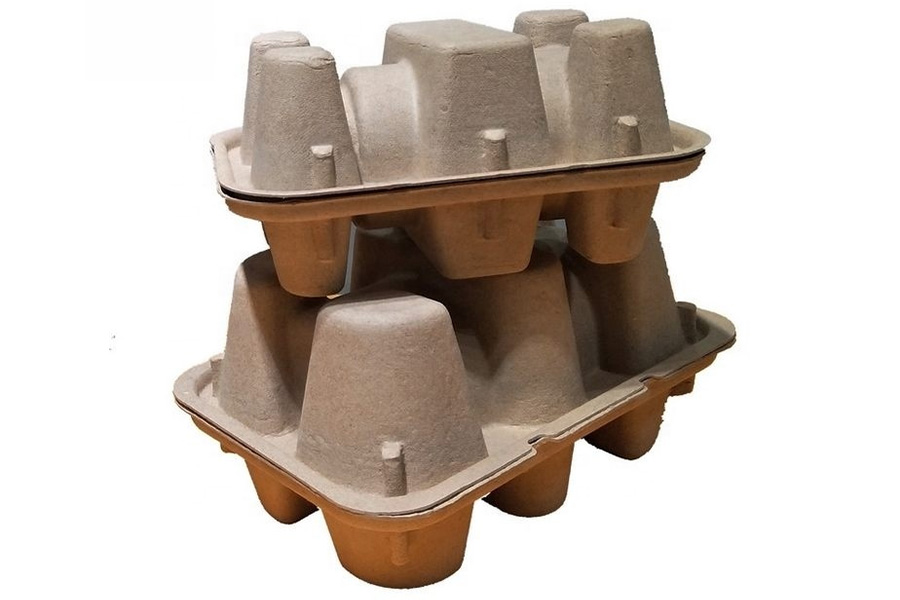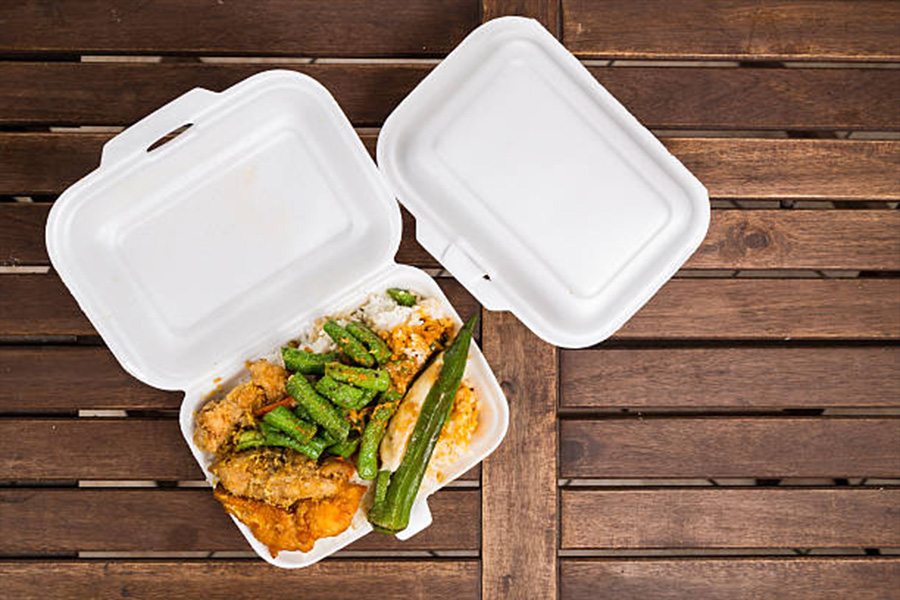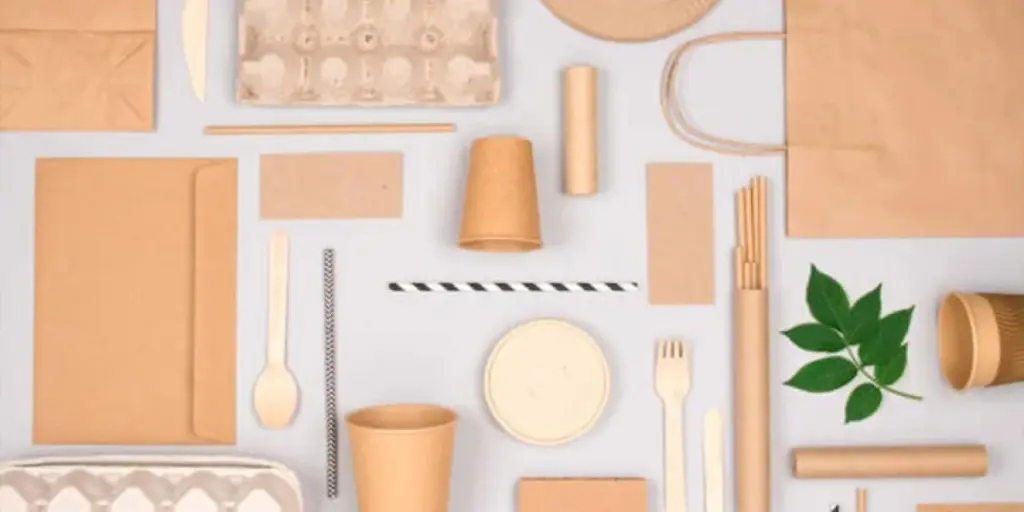Today’s world is seeing a shift from packaging that’s harmful to the environment to packaging that can either be repurposed or is biodegradable. With consumers becoming more environmentally conscious by the day, it’s imperative that businesses turn to more sustainable packaging. This type of packaging can now be found in all industries, from clothing to food and cosmetics, and it’s only growing in popularity.
Table of Contents
What is biodegradable packaging?
Biodegradable packaging’s global market value
5 types of biodegradable packaging to use
The next steps for biodegradable packaging
What is biodegradable packaging?
Biodegradable packaging is made up of materials that will decompose or disintegrate without causing any harm to the environment. This type of packaging is created using molecules that can often be found in living organisms, such as cellulose and proteins, and they can often be made from waste plant products too. This plant-based packaging is the best environmentally friendly alternative to plastic, which is known for its long decomposition rate and the harm that it causes to nature in the short and long term.
Biodegradable packaging’s global market value
Packaging plays an essential role in all types of businesses, but in recent years, with the world becoming more eco-friendly and sustainable, packaging has undergone some changes to fit in with consumer demands. Plastic is still being heavily used, but a new trend has emerged where consumers actively look into a company’s sustainability practices and methods of shipping before purchasing anything.
In 2020, the biodegradable packaging market was valued at USD 81.70 billion. By 2026, the market is expected to register a CAGR of 6.35% and grow to a value of USD 118.85 billion, which is a large increase in only 6 years. Reasons for this increase include bans on plastic, a desire by governments to limit the amount of waste being produced, and rising consumer environmental awareness and sustainable lifestyles.

5 types of biodegradable packaging to use
Companies are increasingly being told to make their supply chains more environmentally friendly. The market is now seeing those sustainability practices turning to the type of packaging being used. Cosmetic squeeze tubes, molded packaging, shipping and accessory bags, and food packaging are all heavily receiving a biodegradable overhaul in today’s packaging market.
Molded pulp packaging
The molded sugarcane bagasse pulp packing can be used to safely transport products or store items on a shelf. This type of biodegradable packaging can be shaped into boxes, trays, and ready-to-use packaging for food. As the packaging is biodegradable, it can be used afterward for plants until it starts to break down naturally. It’s already heavily being used in the cosmetics and gaming industries, and its uses are expected to expand in the near future.

Compostable shipping bag
Many companies are turning away from single-use plastic, and governments are increasingly looking to invest in businesses and projects that use more eco-friendly alternatives to plastic. In addition, a large portion of consumers are now turning to online shopping, so the production of shipping bags has naturally increased with these changes.
The compostable shipping bag is one type of biodegradable packaging that’s very popular right now. It’s not built to last, which is exactly what people want. Made up of compostable materials, such as corn starch, these bags turn into organic fertilizer and are just as sturdy as plastic shipping bags. This is the type of packaging that consumers now come to expect their items to be shipped in.
Biodegradable cosmetic tubes
Cosmetic items such as perfumes more often than not come in glass bottles, but some of these items often come in plastic tubes too. Keeping in line with being more eco-conscious, biodegradable cosmetic tubes are making big waves in the industry.
These plastic squeeze tubes are fully customizable and include key features that plastic tubes have, such as a flip top cap and easy usage. This type of cosmetic packaging is traditionally only used until the product inside is empty, so when these are disposed of they won’t cause any permanent damage to the environment as they’re fully biodegradable.
Starch-based food packaging
The food packaging industry is known for its single-use plastic or use of styrofoam takeaway containers that can’t be recycled. Starch-based containers are now highly being used and are in popular demand as they don’t contain any pollutants and can be used for meal prep, in the microwave, for picnics, and more.

Cornstarch garment packaging
The clothing industry is notorious for its overuse of plastic packaging to protect clothing, even down to the smallest garment. This plastic is immediately thrown out by the consumer and is rarely reused. However, the cornstarch garment packaging is changing this. These types of bags are 100% biodegradable and have the option of a compostable zipper closure as well. Items inside are still as protected as they were with plastic packaging, but with less effect on the environment.
The next steps for biodegradable packaging
The overuse of packaging has always been a problem for many businesses, from large corporations to small family-run setups. The implementation of biodegradable packaging in industries such as food, clothing, and cosmetics is a positive change that’s in keeping with the sustainable lifestyle that many consumers are now trying to achieve.
As the world becomes more eco-friendly and looks to reverse the damaging impact that society has had on the planet, biodegradable packaging will play a big role in creating less of a carbon footprint. Over the next few years, the packaging market is expecting to see a large increase in companies using biodegradable packaging as a way to keep up with their own sustainability initiatives and keep consumers interested in their brands and products.





Thankful